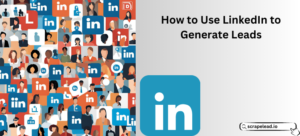Contents

Leads vs Prospects: What’s the Difference and Why It Matters?
In developing sales and marketing plans, one must distinguish the difference between a lead and a prospect since it implies very different ideas.
The words “leads” and “prospects” are rather often confused, but they are surely not the same. For instance, a lead refers to an individual or entity who at least is somewhat interested in a product or service whereas a prospect refers to a similarly interested yet more advanced lead who is likely to purchase the product.
This difference in definition changes how firms think about prospecting, lead generation, and, more importantly, sales. With this in mind, let’s look at their definitions together with examples and the major differences between them so that their importance can be understood within the business domain.
What is a Lead?
A lead is a contact who has demonstrated some kind of interest in your company but is not along the buying journey. The interest itself may be minimal, in the form of a person signing up for a newsletter, filling out a contact form, or interacting with content.
At this stage, the leader’s buying intention is not still very clear, and their qualification as a potential customer has not been fully proven.
Key Features of a Lead:
- A lead is basic contact information: an email address, a phone number, or anything else.
- Leads can generally come from many marketing channels: advertisements in social networks, email campaigns, content downloads, or even events where people register.
- A lead might not be qualified to make a purchase, thereby necessitating further nurturing to make the lead become a prospect.
For instance, a user downloads an eBook or registers for a webinar on your website. That makes them a sales lead, but whether they will proceed to purchase your product is not known.
Types of Leads
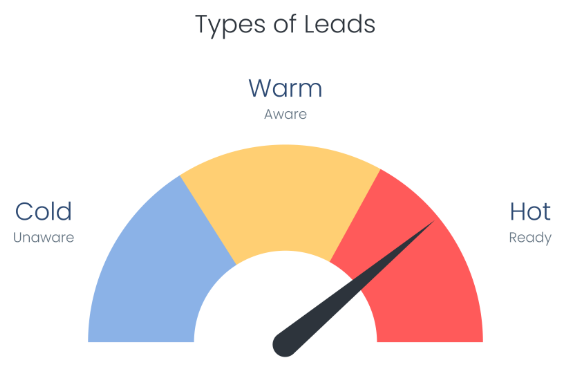
Want to dig more into types of leads?
How to Qualify a Lead
To qualify a lead is to check if they may potentially become a prospect.
- Leads have to be ranked using a form of lead scoring as done when visiting your website, signing up, or so on.
- Use the BANT method to see if they will find the Budget, Authority, Need, and Timing to make purchases.
- CRM systems help track how interested and ready they are in the purchase.
Qualifying leads direct you to concentrate on those likely to become customers, which may save you time and possibly boost sales.
What is a Lead in Marketing?
In marketing, leads define the potential customers that are interested in the offers in your business by, mainly interacting with your brand at one of the following platforms:
- Filling in form.
- Downloading a resource.
- Subscription on the newsletter.
- Click through an advertisement.
The acts give them “qualified” so they can receive focused messages related to marketing.
Leads meaning in marketing as follows:
- Marketing Qualified Leads (MQLs): Prospects who are active in marketing activities but not yet qualified for sales.
- Sales Qualified Leads (SQLs): Lead, qualified by the marketing team, which passes to the sales team for direct engagement.
What Is a Lead in Sales?
A lead in sales can be described as a contact or prospect who has shown a certain level of interest in any product or service. The sales team then works to develop the leads into prospects, and then into paying customers.
The meaning of leads in sales is the identification and nurturing of individuals who can benefit from your offerings.
Examples of lead in sales include someone responding to a sales pitch, a person attending a webinar, or requesting a product demo.
Significance of Leads in Sales and Marketing
- Leads feed the sales pipeline, thus leading to higher conversions.
- Leads can be segmented so that the right approach can be applied for better engagement and closure.
- Consistent leads mean a long-term, scalable business.
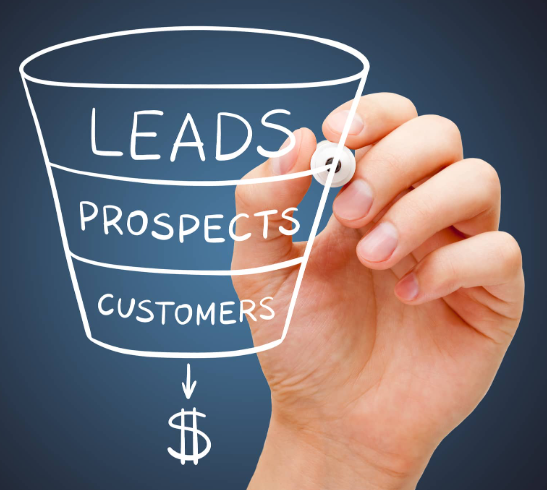
What is a Prospect?
A prospect is a qualified lead that has the qualification; that is, they qualify and have an interest in the given products or services that the businessman offers.
In selling, a prospect is already very close to becoming a customer when compared to a regular lead in the business.
Key Features of a Prospect:
- Prospects are engaging actively with your company, inquiring or requesting demos or asking the price.
- It has qualification criteria, budget, authority, and needs just like the target market.
- Prospects have a better chance of finally converting into paying customers than general leads.
- The sales teams like the prospects through custom follow-ups, detailed product presentations, and specific communication strategies.
- They have the potential to go exploring more of the products and, therefore, become an ideal sales candidate.
- An actual prospect is needed to attain optimal sales strategies to be successful in the achievement of business goals.
Types of Prospects
There are different types of prospects classified based on interest level, participation, and readiness to purchase:
1. Cold Prospects
Cold prospects refer to people or organizations that come within your prospect market profile but do not have any previous interactions with your brand.
These are the prospects whom you can reach through:
- Cold calls
- Email marketing
- Advertisements
For example, contacts from a trade show who have never been in contact with your product.
2. Warm Prospects
People who have had contact with your company and show some level of interest are known as warm prospects.
These can be:
- Having subscribed to your newsletters
- Interacted with your website and social media posts
- Downloading content like brochures or guides
Engagement Tip: Nurture these prospects by following up in a highly personalized and content-centric way.
3. Hot Prospects
They are potential buyers, actively talking to your sales teams.
They can be easily found when they:
- Have scheduled a demo or consultation
- Requesting a proposal or quote
- Visiting your website pricing page multiple times
These leads need to be attended to to seal the deal promptly.
Prospect Meaning in Business
Business prospects in a business context are referred to as potential clients or customers who fit into the ideal buyer profile of the company. They have expressed interest in your offerings and may convert into buyers with proper nurturing.
For instance, if a person schedules a meeting to discuss pricing or attends your webinar, then he can be classified as a business prospect.
How to Identify and Qualify Prospects
Identification and qualification of leads in sales and marketing mark very important steps toward directing your attention toward the right prospective customer who is most likely to convert.
A prospect is a lead who indicates an interest but also shares some quality with your target audience, and he or she may turn into a paying customer.
1. How to identify prospects?
A. Define Your Ideal Customer Profile (ICP)
Start with demographics, industry, and buying behaviors as a foundation to define your target audience.
For instance, a perfect business prospect for a SaaS tool would be small to mid-sized businesses that require workflow automation.
B. Use Multiple Prospecting Channels
Leverage on different channels to get leads effectively:
- Social media: LinkedIn and Twitter help to source business leads.
- Company websites: Inquire about industries and people that resonate with your ICP.
- Referrals: Warm leads are acquired mainly from referrals from satisfied customers.
- Content marketing: Attraction of prospects through publishing relevant blogs, guides, and resources
Want to get leads from LinkedIn?
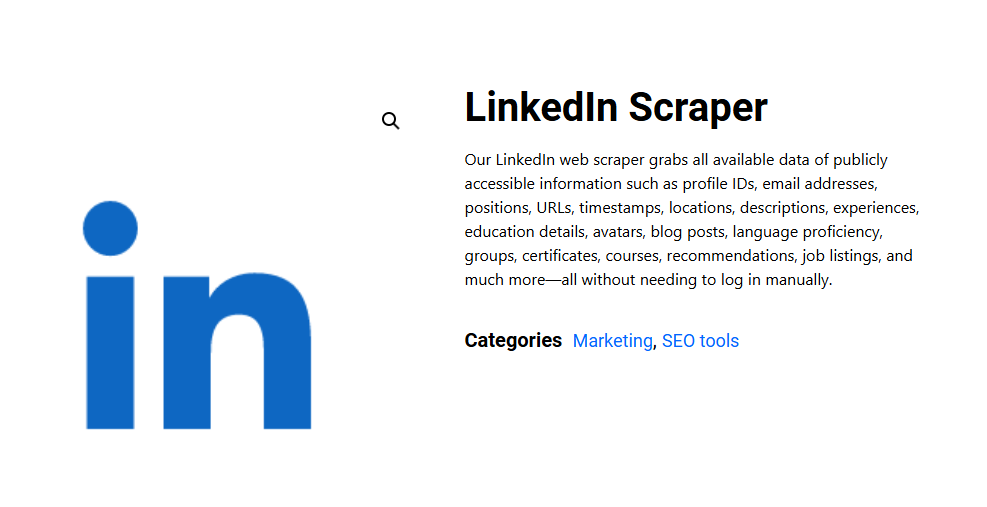
C. Leverage on Technology for Prospecting
- CRM Tools: Track and manage potential leads.
- Prospecting Software: Tools such as ScrapeLead.io help identify high-potential leads from social media and websites.
- Lead Scoring: Automation of ranking based on engagement and profile fit.
2. How to Qualify Prospects?
A. Know the Difference Between Lead and Prospect
Lead: That person is newly interested in your offering. Not thoroughly vetted, however.
Prospect: Leads who meet specific criteria and are ready for sales engagement.
B. Use Qualification Criteria
Qualify prospect using a check-off from key criteria such as:
BANT
- Budget: Do they have sufficient budget to be able to pay for a product or service?
For example, a prospect in sales could ask for the price or even the payment plans. - Authority: Is he in the buying process or is he the decision-maker?
- Need: Does your offering solve any pain points that your offering has for the customer?
- Timeline: Are they close to a purchase?
CHAMP
- Challenges: What problems do they face?
- Authority: Who is involved in the decision-making?
- Money: Is budget a concern?
- Prioritization: How important is solving this problem to them?
3. Note down Behavioral Cues:
Prospect activity with your brand for the amount of interest they are having in:
- Websites: Visiting the price or product pages frequently.
- Emails: Opening and clicking emails frequently.
- Social Media: Liking or commenting, sending prospect DM (prospect to a message).
4. Use Technology for Qualification
Qualify prospects faster with several tools:
- CRM Software: The tool to track prospect activities and engagements.
- Prospecting Tools: Find and concentrate on high-potential business leads.
- Marketing Automation: Grades leads according to their engagement with your content.
5. Categorize Leads
Classify leads on how ready they are to buy in the following:
- Cold Prospects: Not ready to buy but worth cultivating.
- Warm Prospects: Interested, but needs more engagement.
- Hot Prospects: Ready to Buy.
6. Create Prospect Interaction Table
Here is an example of a prospect interaction table.
| Criteria | Example Interaction | Purpose |
|---|---|---|
| Budget | “What’s your allocated budget for solving this issue?” | Identify financial capability. |
| Authority | “Are you the final decision-maker, or is there a team involved?” | Understand influence. |
| Need | “What are the biggest challenges you’re facing right now?” | Confirm product fit. |
| Timeline | “When are you looking to implement a solution?” | Assess urgency. |
7. Avoid Common Mistakes
- Assume interest is readiness: Leads are not necessarily prospects. Engage the one that fits your selection criteria.
- Overlooking Decision-Makers: Always confirm if the person you’re speaking with has purchasing authority.
- Ignore Engagement Signals: Behavioral data is critical to identifying warm and hot prospects.
What is Prospects in Marketing?
A prospect in marketing refers to someone who shows interest in your products and is part of your ideal customer profile.
This may mean the prospect belongs to your demographic, psychographic, or behavioral group. Prospects are not people who browse casually.
They are companies or people that:
- Fit into the ICP (Ideal Customer Profile).
- Exhibit engagement with your marketing content.
- Need your product or service?
What is a Prospect in Sales?
In sales, the term prospect refers to a qualified lead with actual interest and potential to become a customer.
- The usual contact with the sales team of prospects is through discovery calls, product demos, or personalized offers.
- Unlike leads, the evaluation of prospects is always done on criteria such as budget, authority, need, and timeline, called the BANT framework.
In sales, prospects are individual customers or companies that have indicated an intent to buy and match your product’s market target.
Significance of Prospecting in Marketing and Sales
- Helps to build a healthy sales pipeline.
- Ensures targeting the right people to get higher conversion rates.
- Guarantees long-term growth of business through continuous identification of new leads.
Now let’s move on main topic “Lead vs Prospect”…
So, What is the Difference Between a Lead and a Prospect
| Aspect | Lead | Prospect |
|---|---|---|
| Stage | Early stage in the sales funnel. | Mid-stage, closer to purchasing. |
| Interest | General interest or curiosity. | Specific, actionable interest. |
| Engagement | Limited engagement with your brand. | Actively engaging with the sales team. |
| Qualification | Not yet qualified. | Qualified based on criteria like BANT. |
Prospecting vs Lead Generation
| Aspect | Lead Generation | Prospecting |
|---|---|---|
| Definition | The process of attracting potential leads. | The process of identifying and engaging potential prospects. |
| Purpose | Fills the top of the funnel with new leads. | Qualifies and nurtures leads into prospects. |
| Methods | Content marketing, ads, social media. | Cold calls, emails, networking. |
Why Prospect vs Lead Matters
- Tailored Messaging: Knowing if it’s a lead or prospect will help tailor messages appropriately.
- Efficient Sales Process: Qualified prospects save sales efforts in terms of time and resources.
- Improved ROI: The conversion rate, as well as revenue growth, improve as the focus is on the prospect.
Wrap-UP
The difference between leads and prospects is that prospects are more ready to interact with your business. While leads represent initial interest, prospects are qualified and ready for deeper interactions. This makes the distinction very important to understand because businesses can design their strategies to be tailored in the best way to achieve better engagement and conversions.
ScrapeLead helps companies scrape and clean the data in real-time and find a higher-quality prospect and, ultimately, a good lead-nurture opportunity that would save much more time. This, again, helps increase your revenues, keeps the sales funnel running, and forms long-term relationships with the customer.
FAQ
Leads are defined as those people who indicate interest in your product or service while prospects are qualified leads with an increased likelihood of purchasing from your company.
The understanding of this distinction serves to guide marketing efforts that are more effective and thereby better utilize resources while obtaining higher conversion rates.
ScrapeLead is a set of tools to extract valuable data. They help businesses nurture leads and qualify prospects efficiently.
Real estate, SaaS, e-commerce, and digital marketing are industries that have enormous growth potential if approached differently for leads and prospects.
Apply such tools as the Instagram Scraper, and LinkedIn Scraper at ScrapeLead to generate insights, lead potential customers, and qualify them accordingly based on their needs and interests.
Start scraping instantly
Sign up now, and get free 500 credits everymonth.
No credit card required!
Related Blog
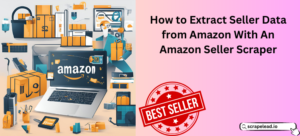
How to Extract Seller Data from Amazon With An Amazon Seller Scraper
Gain a competitive edge using an Amazon seller scraper to extract valuable seller data and optimize your business strategy.
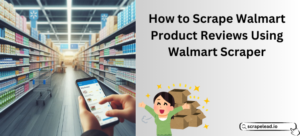
How to Scrape Walmart Product Reviews Using Walmart Scraper
Discover smart ways to scrape Walmart product reviews and turn data into actionable insights.

